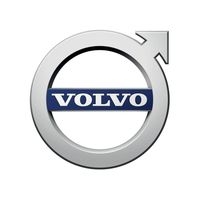Steel and Sustainability: A New Era for Volvo Cars and SSAB
June 18, 2025, 11:33 am
In a world grappling with climate change, the automotive and steel industries are at a crossroads. They must adapt or be left behind. Recently, Volvo Cars and SSAB, a Nordic steel company, forged a partnership that could redefine the future of manufacturing. This collaboration aims to produce decarbonized steel, a game-changer for both companies and the environment.
Volvo Cars has taken a bold step. They are the first automaker to commit to using SSAB Zero™ steel in serial production. This steel is not just any steel; it’s a beacon of hope in the fight against carbon emissions. SSAB Zero™ is crafted from recycled scrap metal, utilizing fossil-free electricity and biogas. The result? Steel with virtually zero fossil carbon emissions. It’s like a breath of fresh air in a polluted world.
The significance of this partnership cannot be overstated. Steel accounts for about 25% of the material-related emissions in a new Volvo car. By integrating SSAB Zero™ steel, Volvo aims to cut its greenhouse gas emissions significantly. The goal is net-zero emissions by 2040. This collaboration is a leap toward that ambitious target.
The steel will be used in key components of Volvo’s upcoming fully electric EX60 SUV and other vehicles built on the next-generation SPA3 architecture. This is not just about being eco-friendly; it’s about maintaining the high safety and performance standards that Volvo is known for. The new steel meets the same stringent requirements as traditional steel, proving that sustainability doesn’t have to compromise quality.
SSAB’s commitment to sustainability is equally impressive. The company has pledged to eliminate fossil carbon dioxide emissions from its operations. Their journey began with the launch of SSAB Zero™ in 2023. This partnership with Volvo is a crucial part of that journey. It’s a step toward a future where steel production is clean and efficient.
But the collaboration doesn’t stop there. SSAB will also source high-quality automotive steel scrap from Volvo’s Olofström production plant. This scrap will be recycled at SSAB’s mill in Oxelösund, Sweden, starting in 2026. This closed-loop system reinforces the circular economy, where waste is minimized, and resources are reused. It’s a win-win for both companies and the planet.
The new electric arc furnace at the Oxelösund site will play a pivotal role in this transformation. It will allow SSAB to produce steel with minimal emissions. This innovation is expected to cut emissions equivalent to 3% of Sweden’s total CO₂ output. That’s a significant impact for a single facility.
As the automotive industry shifts toward electrification, the demand for sustainable materials will only grow. Consumers are becoming more conscious of their choices. They want products that are not only high-quality but also environmentally friendly. This partnership positions Volvo and SSAB as leaders in this new market.
The implications extend beyond just the two companies. This collaboration sets a precedent for the entire automotive and steel industries. It shows that it is possible to innovate while being responsible stewards of the environment. Other manufacturers will likely take notice and follow suit.
The road ahead is not without challenges. Transitioning to sustainable practices requires investment and commitment. Both companies must navigate the complexities of supply chains and production processes. However, the potential rewards are immense. A cleaner planet, a healthier population, and a sustainable future are worth the effort.
Volvo’s ambition to achieve net-zero emissions by 2040 is a bold statement. It reflects a growing trend among automakers to prioritize sustainability. As the industry evolves, partnerships like the one with SSAB will be crucial. They represent a shift in mindset, where environmental responsibility is woven into the fabric of production.
In conclusion, the partnership between Volvo Cars and SSAB is a significant milestone in the journey toward sustainable manufacturing. By embracing decarbonized steel, they are not just reducing emissions; they are setting a new standard for the industry. This collaboration is a testament to what can be achieved when innovation meets responsibility. The future is bright, and it’s made of steel.
Volvo Cars has taken a bold step. They are the first automaker to commit to using SSAB Zero™ steel in serial production. This steel is not just any steel; it’s a beacon of hope in the fight against carbon emissions. SSAB Zero™ is crafted from recycled scrap metal, utilizing fossil-free electricity and biogas. The result? Steel with virtually zero fossil carbon emissions. It’s like a breath of fresh air in a polluted world.
The significance of this partnership cannot be overstated. Steel accounts for about 25% of the material-related emissions in a new Volvo car. By integrating SSAB Zero™ steel, Volvo aims to cut its greenhouse gas emissions significantly. The goal is net-zero emissions by 2040. This collaboration is a leap toward that ambitious target.
The steel will be used in key components of Volvo’s upcoming fully electric EX60 SUV and other vehicles built on the next-generation SPA3 architecture. This is not just about being eco-friendly; it’s about maintaining the high safety and performance standards that Volvo is known for. The new steel meets the same stringent requirements as traditional steel, proving that sustainability doesn’t have to compromise quality.
SSAB’s commitment to sustainability is equally impressive. The company has pledged to eliminate fossil carbon dioxide emissions from its operations. Their journey began with the launch of SSAB Zero™ in 2023. This partnership with Volvo is a crucial part of that journey. It’s a step toward a future where steel production is clean and efficient.
But the collaboration doesn’t stop there. SSAB will also source high-quality automotive steel scrap from Volvo’s Olofström production plant. This scrap will be recycled at SSAB’s mill in Oxelösund, Sweden, starting in 2026. This closed-loop system reinforces the circular economy, where waste is minimized, and resources are reused. It’s a win-win for both companies and the planet.
The new electric arc furnace at the Oxelösund site will play a pivotal role in this transformation. It will allow SSAB to produce steel with minimal emissions. This innovation is expected to cut emissions equivalent to 3% of Sweden’s total CO₂ output. That’s a significant impact for a single facility.
As the automotive industry shifts toward electrification, the demand for sustainable materials will only grow. Consumers are becoming more conscious of their choices. They want products that are not only high-quality but also environmentally friendly. This partnership positions Volvo and SSAB as leaders in this new market.
The implications extend beyond just the two companies. This collaboration sets a precedent for the entire automotive and steel industries. It shows that it is possible to innovate while being responsible stewards of the environment. Other manufacturers will likely take notice and follow suit.
The road ahead is not without challenges. Transitioning to sustainable practices requires investment and commitment. Both companies must navigate the complexities of supply chains and production processes. However, the potential rewards are immense. A cleaner planet, a healthier population, and a sustainable future are worth the effort.
Volvo’s ambition to achieve net-zero emissions by 2040 is a bold statement. It reflects a growing trend among automakers to prioritize sustainability. As the industry evolves, partnerships like the one with SSAB will be crucial. They represent a shift in mindset, where environmental responsibility is woven into the fabric of production.
In conclusion, the partnership between Volvo Cars and SSAB is a significant milestone in the journey toward sustainable manufacturing. By embracing decarbonized steel, they are not just reducing emissions; they are setting a new standard for the industry. This collaboration is a testament to what can be achieved when innovation meets responsibility. The future is bright, and it’s made of steel.

